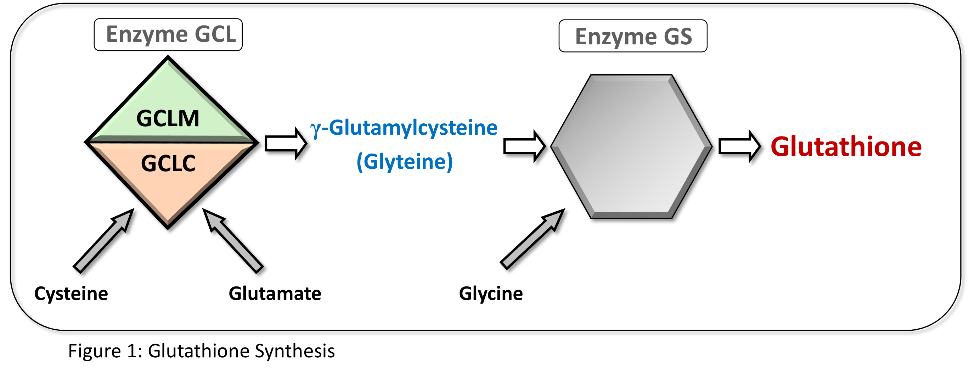and why this popular silver bullet does not live up to its reputation for increasing glutathione
The online world is awash with remarkable claims about the mystical powers of N-acetylcysteine (NAC) as a way to increase glutathione. One could easily be forgiven to conclude that this compound is the silver bullet for anyone looking to enhance cellular glutathione. But does NAC live up to its reputation, and where did all these claims originate from? To find out, we need to look at how glutathione is actually made inside our cells. Before all that, however, let’s take a short trip into hospital - because that’s where NAC truly does serve an important purpose.
The perils of Acetaminophen
Scores of people all over the world suffer from a vast range of usually benign painful conditions ranging from headaches to toothaches and the many other sufferings we encounter day to day. No wonder there is a vast range of painkillers available to alleviate the aching troubles of everyday life. The most popular and usually well-tolerated painkiller is acetaminophen. Also known as paracetamol outside the USA, it has many brand names, the most common being Tylenol and Panadol. Invented as far back as 1877, it didn’t become popular as the go-to painkiller until the mid-twentieth century. Most people have reached for acetaminophen at some point in their lives, oblivious to the fact that, in high doses, it can have fatal consequences.
Taking more acetaminophen than the recommended daily limit is toxic to the liver and is the leading cause of acute liver failure in the western world. Whether taken as deliberate act or by accident, excess acetaminophen will lead to a painful and lengthy death while it slowly erodes the liver. In many cases, a liver transplant is the only option.
NAC was first suggested as an antidote back in 1974 when it was recognized that an overdose of acetaminophen exhausts all hepatic (in the liver) glutathione stores. The reason for this is that glutathione has the unenviable job of mopping up all the free radicals produced as it attempts to neutralize acetaminophen. In this unique case only, where hepatic glutathione is catastrophically reduced to almost zero, NAC provides our cells with cysteine, one of glutathione's building blocks. This can sometimes give the liver a fighting chance to recover. As you can see, however, this is an exceptional use for NAC in hospital settings only. But it wasn’t long before misguided researchers and marketers jumped onto the bandwagon and suggested selling NAC as a glutathione enhancer for everyone. If it works in hospital, indeed it will work for healthy people! Sorry, but it isn’t that simple. The truth is that cysteine is not required, unless you are suffering from acetaminophen overdose. Not only are our diets rich in cysteine, but foremost, it is a non-essential amino acid which our body can synthesize on its own. This is the reason why acetaminophen overdose is the only medically registered use of NAC to date.
Not content with skewing this truth in their favour, NAC has been adorned with quite a few more astonishing feats that simply do not hold out when put under the microscope. One of these is the misleading claim that NAC is an antioxidant in its own right. But this has been debunked in a prestige medical journal
Supplement companies may disagree with this view; however, the FDA has recently decided that enough is enough with misleading claims on the efficacy of NAC outside its only registered use and moved to disallow the sale of NAC as a dietary supplement. It looks like the silver bullet has lost its shine.
You may also be interested in knowing that NAC is not a natural product. It is produced in chemical factories by combining cysteine with acetic acid. Adverse reactions are possible and have been documented. A not so palatable fact you might consider when reaching for a pill with NAC.
The need for glutathione supplementation (and why NAC doesn’t fit the bill)
A cursory glance at the clinical trial register in the U.S. reveals more than 425 trials using NAC in diverse diseases, usually with very disappointing results. But because they were not successful in showing that NAC is in any way helpful, they were never published. So, the truth about NAC’s failures remains (perhaps conveniently) hidden. After all, a cheap product loaded with false premises is always a popular item – for the company that makes it!
However, what this shows is that researchers are acutely aware of the critical role glutathione depletion plays in the progress of both aging and many illnesses. They also understand that a fast and effective way to supplement it is imperative for useful research to be carried out. So, all these studies are a reflection of the growing frustration amongst the fraternity to somehow make NAC work to enhance cellular glutathione. The problem is, it just doesn’t work!
So, let’s move on from our stint in hospital and look in more detail how glutathione is made in the body.
Glutathione Synthesis – a tale of three amino acids
Glutathione is a protein, albeit a small one called a tripeptide because it consists of only three amino acids: Cysteine, Glutamate and Glycine.

Figure 1 shows how these three amino acids combine to form glutathione with the aid of two enzymes GCL and GS, abbreviations for glutamate-cysteine ligase and glutathione synthetase. GCL is the first step, combining cysteine and glutamate to form gamma-glutamylcysteine (which we call by our proprietary Glyteine®. The second enzyme GS then bonds gamma-glutamylcysteine with the amino acid glycine to form glutathione. Whilst all this may sound a little overly technical, it is important to understand before you spend your money on supplements that are based on hype rather than science.
Interestingly, all three amino acids used for glutathione synthesis are non-essential – our body can make its own. Consequently, there is no need to ingest more cysteine in the form of NAC as it will make no difference to glutathione production. You may rightly ask why then may we need to supplement glutathione at all?
Bypassing GCL with Glyteine®
Just like NAC in normal circumstances, reaching for glutathione itself as a supplement does not work either to increase cellular glutathione. This is well established since glutathione can’t enter cells. It doesn’t matter how or in what form we may unwittingly choose to do so. Marketeers have come up with ingenious names and even try to convince us to inject it (NOT recommended) or put it up our noses. The result is the same and it is simply broken down outside our cells. So, what can we do and should we? Well, let’s look at the two main reasons why we may need to enhance our cellular glutathione:
- As we age, the first enzyme GCL, progressively slows down, resulting in permanently lowered glutathione levels below optimal. It is postulated that this is the reason why we age and become more susceptible to illness in our advancing years
- Environmental and lifestyle factors such as toxins, stress, smoking, and strenuous exercise can quickly deplete glutathione, which is needed to neutralize the damaging free radicals produced due to these factors. The body is slow to replenish glutathione, caused by these free radicals leading to oxidative stress that can cause havoc to our body on multiple fronts
In both cases, the Glyteine® found in Continual-G® acts to quickly replenish cellular glutathione by feeding directly into the GS enzyme. Glyteine® thus bypasses a slowing GCL enzyme as we age and acts fast to bring glutathione back up to normal levels during everyday activities.
But it can do even more! The cellular production of glutathione is tightly regulated to keep our glutathione levels optimal. The GCL enzyme is responsible for this, and this regulation is called glutathione homeostasis. But especially as we get older, the homeostatic level drops due to the slowing down of the GCL enzyme. So, although we may have a plentiful supply of all the required amino acids that make up glutathione, our cells simply don’t make enough anymore to keep us protected from free radicals and a slowing immune system. Since Glyteine® bypasses the GCL enzyme, it has the unique ability to increase glutathione above homeostasis. And it does so rapidly and safely.
Best of all, unlike NAC, Glyteine® is an entirely natural product produced in every cell of your body and clinically proven to rapidly increase cellular glutathione. Glyteine® has been shown to be completely safe even if taken in extreme amounts and is your key to a healthier and stronger body.






